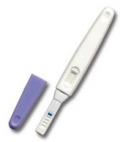Ovulation Induction & Monitoring |
Ovulation induction is usually used in women who do not ovulate (release egg) regularly, have irregular cycles or in women with poly cystic ovaries (PCO) or polycystic ovarian syndrome (PCOS).
Ovulation induction is often combined with ultrasound scans, urine and blood tests this may increase the chances of conception, provided the fallopian tubes are patent and sperm test is normal.
Egg growth (follicular genesis) and release of egg (ovulation) can be improved by giving tablets / injections and monitoring the changes by ultrasound scan and sometimes may also need a trigger injection as well to improve ovulation.
Usually around 2-3 ultrasounds scans may be required to see a positive response to the medications. Miss Akbar carries out this process at SA Fertility.
Ovulation Induction by Tablets (Clomid /Tamoxifen)
Clomid
Clomiphene (Clomid) is usually prescribed for, PCOS / PCO, irregular cycles or no production of egg (anovulation) or sometimes to boost the ovulation. Provided all other criteria are met.
Clomiphene works to stimulate the ovaries to mature an increased number of follicles every month.
As this increases the number of mature follicles in the ovaries, this also increases the likelihood of ovulation and pregnancy. (8-10 % twin pregnancy)
How to take Clomid
Clomid is routinely taken from the second full day of the period for 5 days, (Day 2-6) and the dose may vary from 25-150mg per day. Some women are resistant to the action of Clomid and require larger doses, but most women start on 50mg daily. If no ovulation occurs after increasing the dose over 2 to 3 months, or if no pregnancy results after 6 months when ovulation is happening monthly, alternative treatments should be considered.
Ultrasound scans are carried out 2-3 times during the treatment to check the response and ovulation. Ultrasound scans are combined with urine tests and blood tests to enhance the chances of pregnancy. In some cases trigger injection may be given to improve ovulation. An ultrasound scan also detects if there has been an over response to Clomid.
Side Effects of Clomid
The side effects are mild and rarely may need to be discontinued. (Headache, Mood swings, Nausea and Vomiting, Breast tenderness, Fatigue etc.)
There is no increased risk of miscarriage or birth defects after taking Clomid.
Click Here for the information leaflet on Comid
Tamoxifen
Tamoxifen is similar to Clomid in the effects on the ovary; however it tends to cause fewer side effects. It is a drug commonly used in women with breast cancer and it works well when it comes to egg growth and ovulation.
It is given the same way as Clomid. It is given between 20-60mg daily for 4-5 days, starting on the second day of the period. A scan is performed between day 8 and 12 to monitor egg growth and to check for ovulation.
Click Here for the information leaflet on Tamoxifen Leaflet

Ovulation Induction by Injections (FSH)
FSH injections
The injection FSH (Gonadotrophins) directly affects the ovaries and stimulates follicle development, unlike Clomid, which stimulate the pituitary gland and then the ovaries.
The FSH injection is usually given to women who fail to respond to the tablets Clomid / Tamoxifen.
The commonly used FSH preparations are, Gonal F, Menopur, Fostimon or Merinol
How to take Injection FSH
The injections start between day 2 and 3 of the period, and are usually recommended daily, or on alternate days.
A scan is done on day 1 to 3 of the cycle before starting the treatment to rule out any cysts on the ovaries.
A total of 6 to 10 daily / alternate days, injections are normally needed to ‘grow’ one or two eggs every month. A scan will confirm when the egg(s) are ready to be released. At this stage a trigger injection needs to be given to help the egg(s) release (Profasi, Ovitrelle or Pregnyl).
Click Here for the information leaflet on FSH injection
Side effects
The ovaries may over respond and risk of Ovarian over stimulation / hyperstimulation syndrome. (OHSS).
Note: We usually recommend IUI (Intrauterine insemination) treatment with the FSH injections to improve the chances of pregnancy. Pregnancy should result within 3 to 6 months when the injections are used during each cycle.
The injections are very easy to use and our nursing team can teach you how to do them with practical demonstrations and written instructions.
If this treatment fails to achieve a pregnancy or if the response to the injections is not satisfactory, IVF (In Vitro Fertilisation) is the next step.
Please make an appointment to discuss in details.
Please click here for more information on ultrasound scans
|









